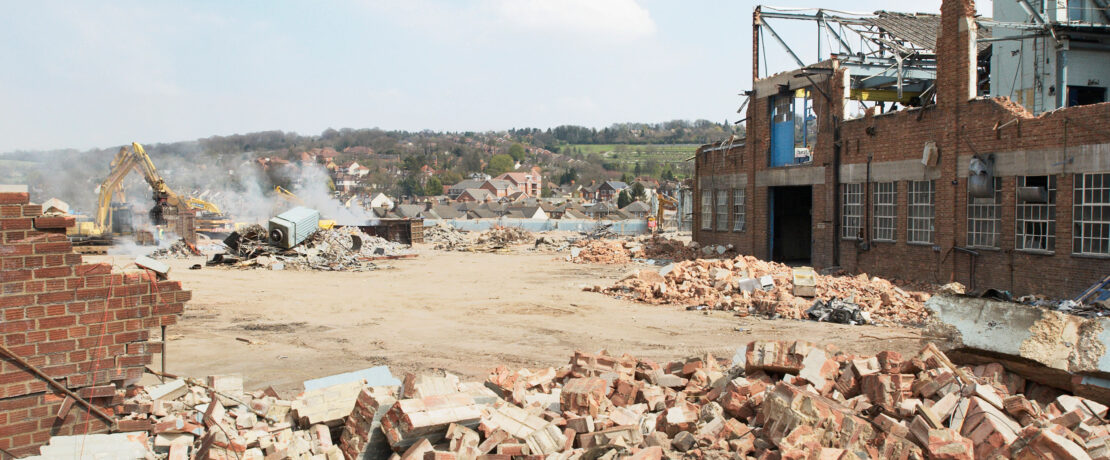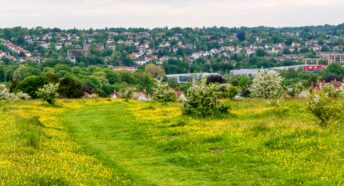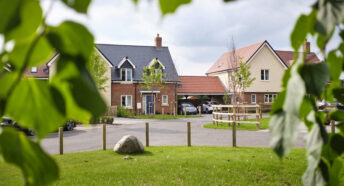Why brownfield is key to sustainable and affordable housing
England is in the midst of an affordable housing crisis, and we are urging the next government to commit to using wasted brownfield land (previously developed land) in our towns and cities.
This ‘better brownfield’ approach is an obvious solution to the crisis, providing affordable new homes whilst saving greenfield land for farming and wildlife. Development on greenfield land should be avoided where possible; it is unsustainable, and often out of reach for people on average salaries, with new ‘affordable’ homes selling for around 80% of the market value.
The potential of brownfield
Our Building on our food security report (2022) shows that in just 12 years (2010-2022) over 14,000 hectares of prime agricultural land was lost to development, equal to around 250,000 tonnes of vegetables, enough to provide nearly two million people with their 5-a-day for an entire year. Meanwhile, available brownfield land increased by 17% in the period between 2018 and 2022 with 23,000 sites, totalling over 27,300 hectares, with the potential for 1.2 million homes as set out in our State of Brownfield report.
Former industrial areas are most often avoided, with the potential for development hindered by underuse, vacancy and neglect, which give rise to social problems linked to deprivation and poor health. Fly-tipping, drug-dealing and other anti-social behaviour can make life difficult for communities, and so people look to settle elsewhere. As people move away, there is further vacancy and neglect, and it becomes a downward spiral.
Yet the fortunes of such places could, and should, be turned around with a genuine commitment to ‘unlock’ brownfield sites. With infrastructure such as utilities, schools, public transport and health facilities already in place, the cost of creating new housing in these areas is much less than on greenfield land, both financially and in terms of carbon emissions. Additionally, the occupation of wasted space in these areas could resolve many other economic, social and environmental problems. In the past, successful regeneration has occurred through a variety of initiatives, and it is hoped the Levelling-Up and Regeneration Act (LURA) (2023) will provide the required policy and investment opportunities for ‘better brownfield’.
Affordable and sustainable
Focusing on brownfield sites would also help to avoid speculative ‘off-local plan’ development of greenfield land. These developments are particularly harmful as they often rely on car dependency due to the lack of sustainable transport infrastructure. Additional traffic on narrow country lanes harms tranquillity and increases congestion, as well as air and noise pollution. Deficiencies in community facilities in rural places also result in long-distance drives to access work, shops, schools and doctors’ surgeries.
Both in terms of affordable housing, and the environment, opting for brownfield over greenfield is the logical choice, and in accordance, brownfield targets were previously set for all local authorities, helping to focus strategic land and investment decisions. However, these have since been abandoned, and CPRE’s research has shown a resulting sharp decline in the number of housing completions on brownfield sites, and an acceleration of homes built on our precious farmland in rural places.
Taking action
Reassuringly, many small and medium-sized building companies choose to focus on small brownfield sites to build new homes, but in recent years larger developers have consumed the market share and focused on greenfield land, squeezing out many smaller companies. This has led to poor quality housing, copy and pasted onto chunks of farmland, eroding rural character, unable to respond to local needs.
In response, CPRE encouraged the government to introduce brownfield land registers to record all brownfield sites with annual updates, and this was successfully implemented in 2017. These records show space for 1.2 million homes, yet less than half these sites are consented for development, with the rest considered ‘unsuitable’, requiring actions to unlock barriers to development such as demolition of buildings, site clearance, removal of contamination, access and ownership issues. Yet there has been no real effort to tackle these problems, and CPRE urges the next government to ensure all brownfield sites are ‘unlocked’ and shovel-ready for building many more homes on the ground.
What the next government needs to do
Here are our six suggested strategies to achieving better brownfield:
- Reintroduce a clear ‘brownfield first’ approach in national planning policy.
- Ensure an approach led by regional and local needs.
- Give powers to metro mayors and local authorities to progress regeneration.
- Improve the powers of Homes England to assemble land and remove constraints.
- Identify all brownfield land on the registers, ensure suitable sites are given permission in principle, and resolve constraints to ensure they are ready for development.
- Provide more support to small and medium-sized builders who have been squeezed out of the market in recent years.









